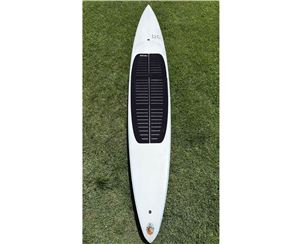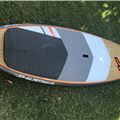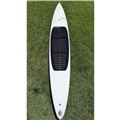Making a hundred thousand dollar mast-erpiece.

Starting from the cheapest item on the list, sticky tape is used to pressurise each layer of pre-preg carbon fibre as it's laid onto the male mould, built from aluminum. There is quite literally a tape dispenser on a track, that runs down the length of the mast as it's rotated!
Then, there's the giant plastic bag that gets sucked onto the mast, to further apply pressure to the whole thing. Without the bag, air might be trapped within the layers of carbon, causing weak points and possibly failure at sea!
Don't forget the copius amounts of Stanley knife blades to cut excess carbon cloth, so they fit perfectly together. You wouldn't want a TP52 mast with wrinkles would you?
To cook it all up, the mast slides into a giant pressure cooker, called an autoclave. It applies even more pressure (in addition to the vacuum bag!) to the structure, squeezing every last molecule of air out of the carbon, while heating it to temperatures well over 100 degrees C. This activates the resin, which is infused into the carbon cloth in a dry state to make handling easier, and fast-tracks the curing process.
Once that's done, the male mould is removed and the technical work begins. Halyards are run, fittings attached and of course, every carbon mast gets a coat of paint to keep the UV out!
Check out how carbon fiber yacht masts are made in the video below.











